Preparing the Lift France 11 conference, and given our interest in a session about the future of cities, urban computing and its implications, we ran across this interesting column by Saskia Sassen about "Smart Cities" on a McKinsey digital. We liked it a lot and we invited her to the conference.
Few days ago, she kindly proposed to answer few questions I had about her perspective on this topic.
Nicolas: You recently wrote an essay about so-called "Smart Cities" at Mckinseydigital.com, I really liked your point about the need to "urbanize" the technologies deployed in Smart Cities projects. What do you mean by that and what do you think is missing in projects such as New Songdo or Masdar?
Saskia Sassen: This notion of urbanizing technology is one of several along those lines that I have been working out for a while. The starting point was not necessarily cities. It was the notion that in interactive domains the technology delivers its capabilities through ecologies that include non-technological variables --the social and the subjective, the logics/aims of users, for example finance uses the technology with different aims from Amnesty international, etc etc. Again, I make this argument for interactive domains, not, say, data pipelines.
There is another condition present in the interactive domain, separate from the technology itself. At the beginning I studied how the logic of finance (a sector that is deeply embedded in digital networks and digitized spaces) is not the logic of the engineer and computer scientist and software developer who made the digital domain. The effect is that the user (finance) does not necessarily use all the properties that the engineer etc. put into it. I also looked at civil society organizations along the same lines. This helps explain why the outcomes never correspond to what we may have predicted based on the capacities of the technology.
Now I am looking at cities through the same lens. Users bring their own logics to these technologies. In the case of a city with its vast diversities of people and what makes them tick, the outcome can be quite different from what the designers expected. And this matters. This keeps the city alive, and open. When you embed interactive technologies in urban settings, it is important to allow for this mutating as diverse types of users bring their own logics to those technologies. If the technology controls all outcomes in a routinized fashion ((as if it were a data pipeline) there is a high risk that it will become obsolete, or less and less used, or so routinized that it barely is interactive. More like buying a ticket from an automaton: yes you have choices, but you can hardly call this interactive.
The key, difficult, and ever changing question is how do we keep technologies open, responsive to environmental signals and to users choices, including what may seem quirky from the perspective of the engineer. The city is full of signals and quirky uses: given a chance , it would urbanize a whole range of technologies. But this possibility needs to be made – it is not simply a function of interactive technologies as we know them now, and it needs to go beyond the embedded feedback capability. Open Source is more like it.
Nicolas: Do you feel that networked technologies can lead to new forms of urbanity? Said differently, to what extent are the cities of the future shaped by our past urban experiences and infrastructures?
Saskia Sassen: Urbanity is a mutant. And this means it is made and remade along many different concepts/ideas/imaginations across the world. It can happen in sites where we, we of our westernized culture, might not see it. At night in working class neighborhoods of Shanghai bus stops become public spaces –that is urbanity. In some megacities the only spaces that the poor, often homeless have, are what during daytime hours we see as infrastructure: spaces where multiple bus lines intersect or end in. There are many many such examples of practices that destabilize the formal meaning of a space: this, again, takes making, and in that making lies an urbanity. I do think that urbanity is made; it is not only beautifully designed urban settings.
So yes! I think that networked technologies will also, and in fact, already are, leading to new forms of urbanity. The most familiar of these are of course using the tech to communicate about swarming an actual space –a square, a furniture shop—and diverse locational devices. Again, what intrigues me is to think beyond these somewhat “pre-scribed” possibilities: in two ways. One is through the unsettling, making unstable, the prescribed options embedded in the technology’s design. For instance, inserting a given technological capability into a different ecology of elements (in the sense I used this earlier –technical and non-technical elements). This is what hackers do, in a way. In the case of the city, it would mean bringing an urban logic into that ecology –the city as the hacker. .. a benign, positive hacker of a range of technological domains in cities. The other is what I like to refer to as “barefoot engineering” -- this resonates with the so-called “barefoot doctors” in China’s villages during Communism –knowledgeable locals who knew the properties of plants and understood the village. We need urban “barefoot engineers”!
Nicolas: In the aforementioned paper, you use the term "open-source urbanism". It's interesting to see that metaphor coming from digital culture are currently transposed beyond their original realms. How do you think the "open source" concept can be applied to urbanism? What would be the limits and opportunities?
Saskia Sassen: As a technological practice of innovation, Open Source has not been about cities, but about the technology itself. Yet it resonates with what cities have and are at ground-level, where its users are. The park is made not only with the hardware of trees and ponds, but also with the software of people's practices. There are manay examples, and each city has its own. In my city, NY, an example of such people’s software is New York's Riverside Park in the 1980s which went from being a no-go zone, charged with dangers, to being a park for all those who wanted to use it. How did this switch happen? In part because dog-owners started to walk their dogs in large numbers. Having a dog was itself a function of feeling insecure in a city of high murder rates and much mugging. But the city as lived mutating environment allowed people to talk back: get a dog, walk your dog, go in groups, and you recover the territory of the park. Another example is the recent proliferation of urban agriculture; it was not a top-down decision. It resulted from a mix of conditions, primarily the desire of city residents to make, to green, to transform, and the romance with fresh produce. And now the push is for every roof, every empty plot of land to become a site for urban agriculture. Here we see that a thousand individual decisions created an urban possibility and transformation. There are many diverse initiatives that produce these kinds of "third space."
These are ways in which the city can talk back. We can think of the multiple ways in which the city talks back as a type of open-source urbanism: the city as partly made through a myriad of interventions and little changes from the ground up. Each of these multiple small interventions may not look like much, but together they give added meaning to the notion of the incompleteness of cities and that this incompleteness gives cities their long lives, their flexibility, their capacity to mutate.
And this potential for distributed outcomes is a natural for open source technology. But beyond the technology proper, bringing open source concepts into multiple urban settings/domains strengthens these core features of cities, make them cities of people, strengthen the rights to the city.
In sharp contrast, I think that the model of "intelligent cities" as propounded by technologists, with the telepresence efforts of Cisco Systems a key ingredient, misses this opportunity to urbanize the technologies they mobilize. Secondly, the intelligent city concept if too rigid, becomes a futile effort to eliminate the incompleteness of the city, to get full closure/control. This is a recipe for built-in obsoleteness. Imagine if Rome could not have mutated across the millennia: it would be a dead city now. Third, the planners of intelligent cities, notably Songdo in South Korea actually make these technologies invisible, and hence put them in command rather than in dialogue with users.
Beyond the imagery of open-source urbanisms, can we strengthen this positive scenario of the city's incompleteness by actually deploying open-source technologies in a variety of urban contexts
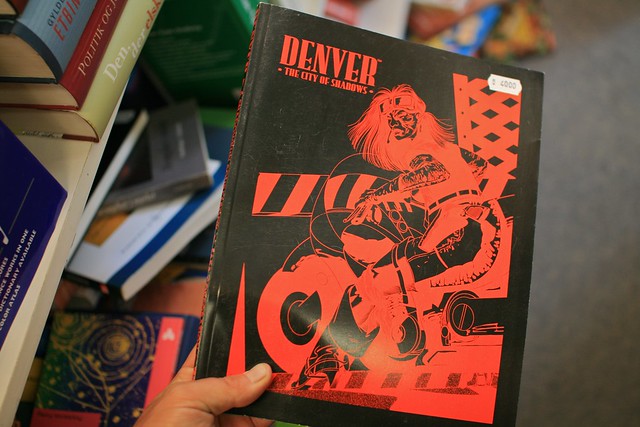 (A picture of a Shadowrun sourcebook that I ran across in Denmark this week)
(A picture of a Shadowrun sourcebook that I ran across in Denmark this week)
 This fellow, encountered at Monument Valley, AZ two week ago, took plenty of time to install this little camera on his huge SUV, a somewhat robotic eye... (or, more likely, a proxy to capture souvenirs).
This fellow, encountered at Monument Valley, AZ two week ago, took plenty of time to install this little camera on his huge SUV, a somewhat robotic eye... (or, more likely, a proxy to capture souvenirs).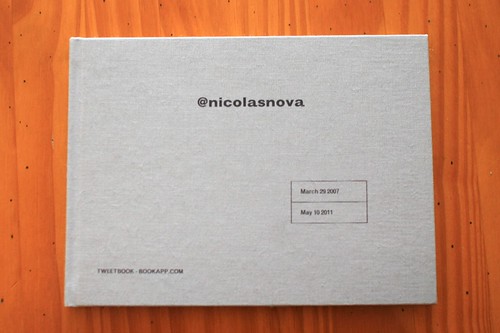

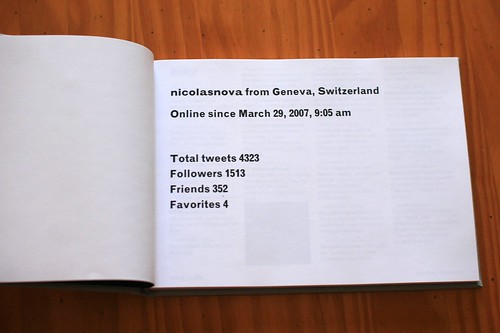
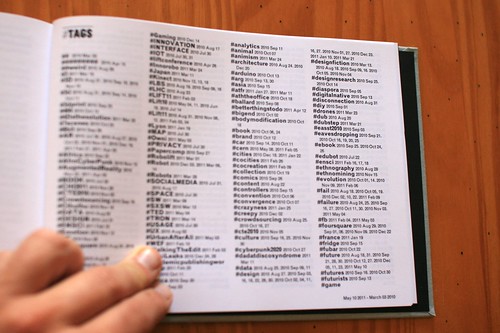
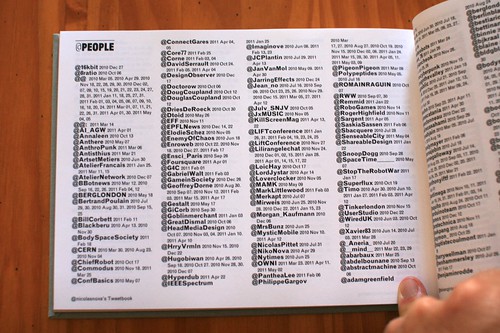





 Although it's hard to see on this picture taken in Marseille last week, it represents the maximum distance between two persons using the same iPhone headset.
Although it's hard to see on this picture taken in Marseille last week, it represents the maximum distance between two persons using the same iPhone headset. 




